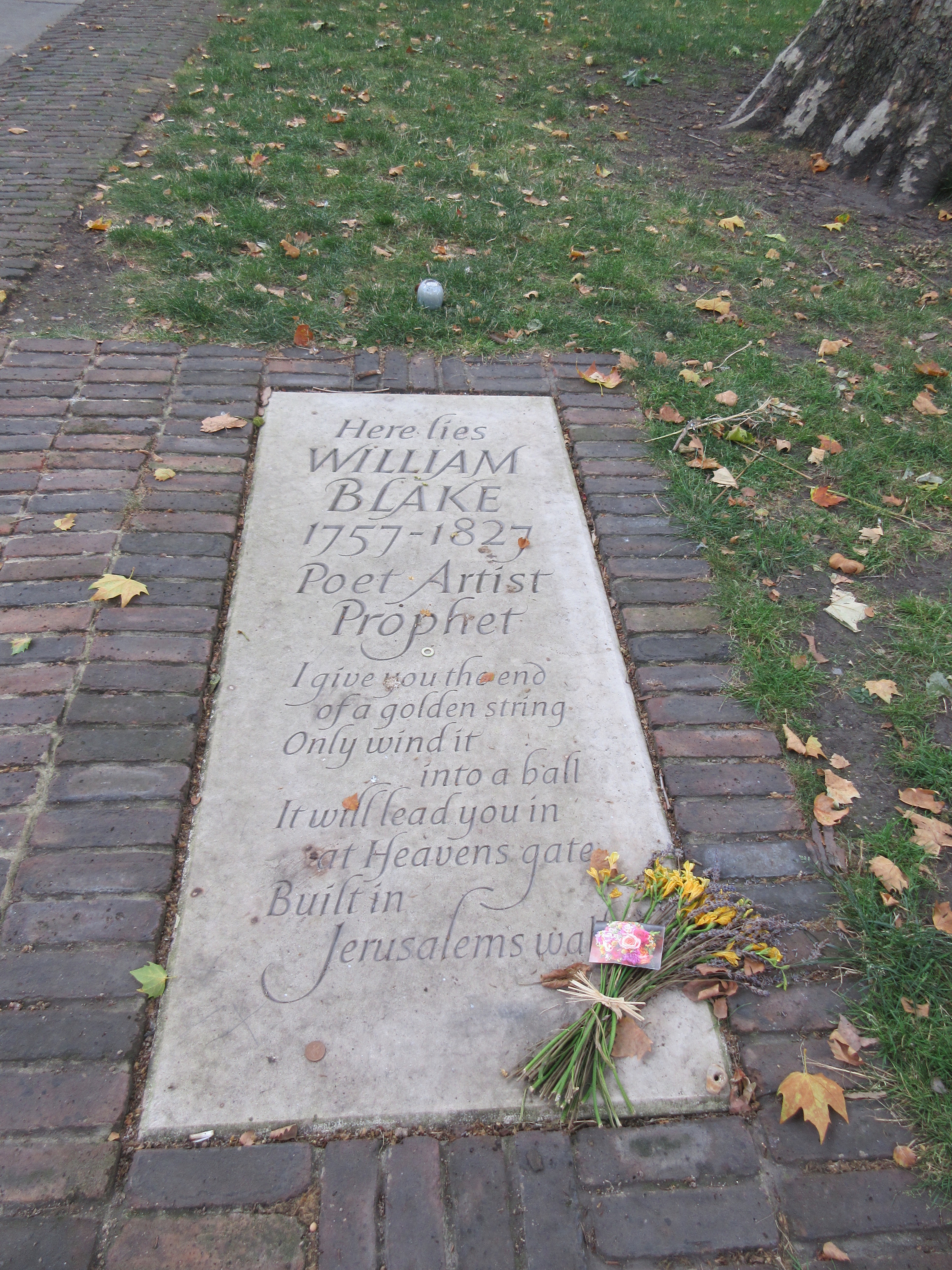Here is a thought: What if, instead of calling for an arboretum on the former golf course, the master plan (see the post here) proposed to construct a large sculpture park? A sculpture park on Hilton Field, the part of the golf course that lies north of Occom Pond, would have little more impact on the neighbors than would an arboretum. It would be managed by the Hood Museum as a site for major new works, and it could provide a home for any refugee works that the college thought appropriate to move from the campus, such as Thel (see the article here; the master plan at least hints at the possible removal of Thel).
Speaking of Thel, here is William Blake’s new gravestone in Bunhill Fields Burial Ground in London. It was created by the Blake Society under the leadership of Philip Pullman, of His Dark Materials fame.

The Anonymous Hall bridge (see photos at the Windover Construction site) deserves praise for adding to the walkability of the northern part of the campus. It seems like the sort of amenity that could easily be cut from a construction budget.
Let’s hope the proposed cemetery bridge (see the final image at the BBB master plan project page for a conceptual view) eventually is built, and when it does cross the burial ground, let’s hope it receives an appropriate amount of design attention. What a fantastic project this could be, and what a great opportunity for an architectural commentary on the influence of ancient Egypt on both bridges and funerary architecture. See for example the post here for a proposal to erect an ominous cemetery gate at each end of the bridge.
Egyptian Revival architecture makes for a good folly; authors Gwyn Headley and Wim Meulenkamp have a new book out called The English Folly: The Edifice Complex. Their earlier book, Follies: A Guide to Rogue Architecture in England, Scotland and Wales, features a photo of the Dunmore Pineapple in Scotland (Wikipedia) on its cover. Yes, that Dunmore: the building’s patron, John Murray, was the Governor of Virginia at the beginning of the Revolution. On December 6, 1775, Murray wrote to (that) Lord Dartmouth to say that “I immediately ordered a Fort to be erected” at Great Bridge, on the edge of the Great Dismal Swamp (pdf, 1311). The utilitarian and hastily-built timber stockade called Fort Murray was pretty much the opposite of a folly; it withstood a rebel siege but no longer exists.